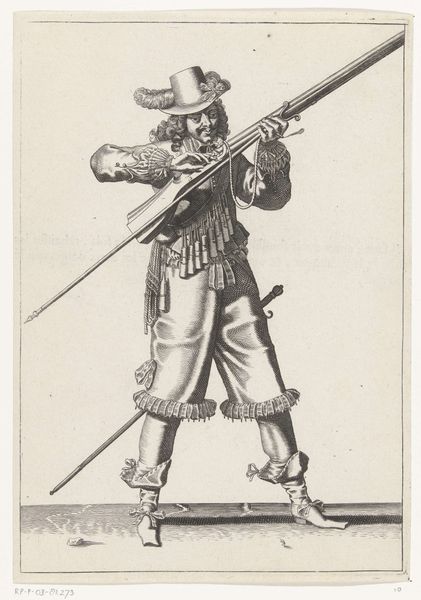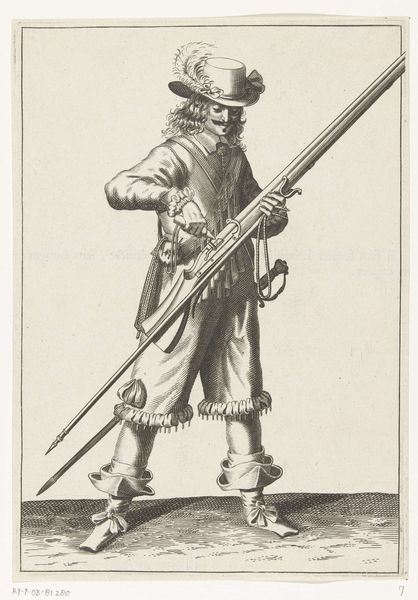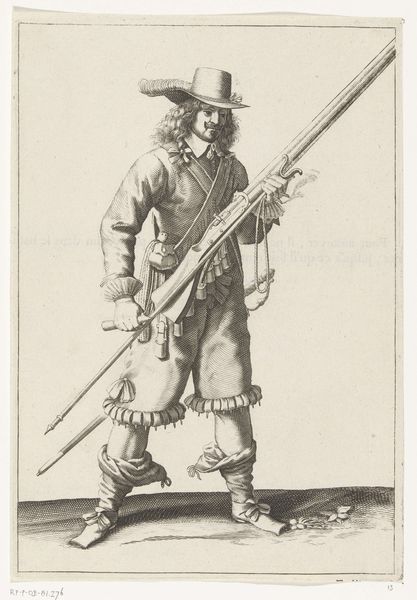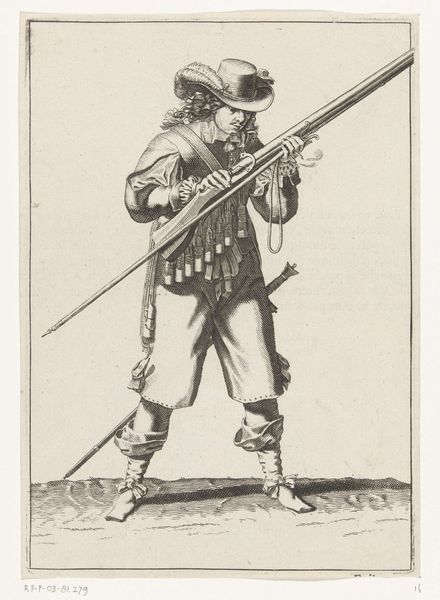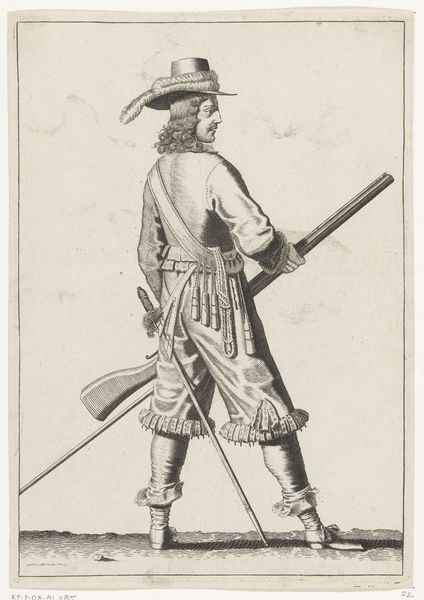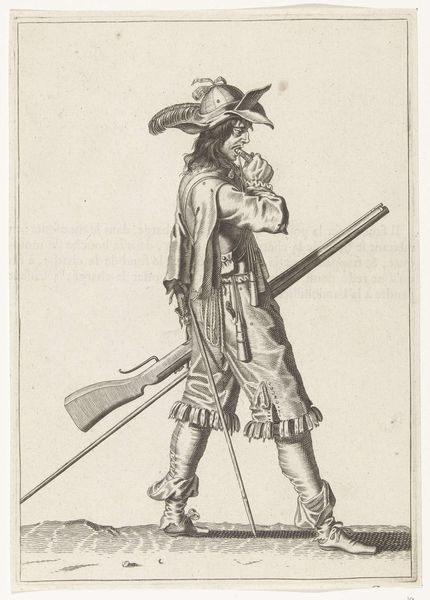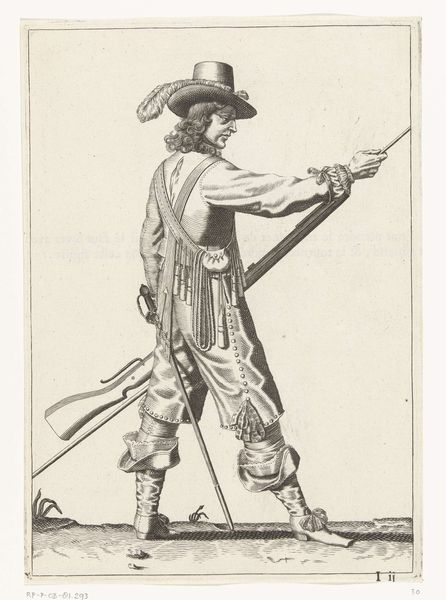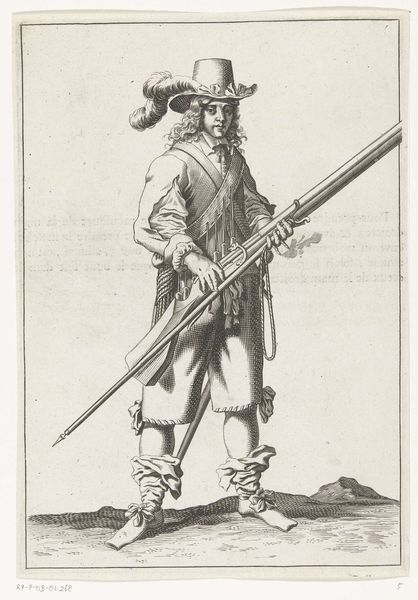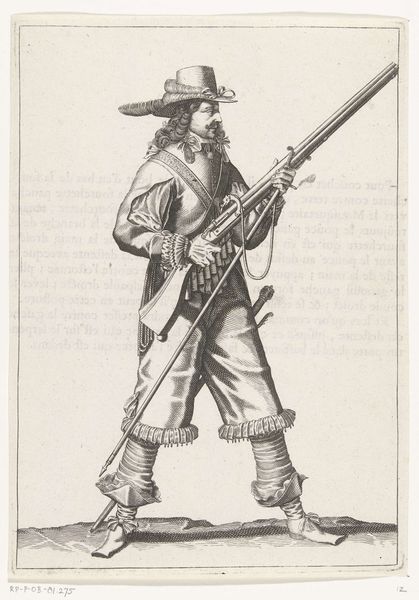
Soldaat met een musket die zijn lont overbrengt van zijn rechter- naar zijn linkerhand, ca. 1645 1645 - 1647
0:00
0:00
print, engraving
#
portrait
#
weapon
#
baroque
# print
#
figuration
#
history-painting
#
engraving
Dimensions: height 235 mm, width 165 mm
Copyright: Rijks Museum: Open Domain
Curator: Let's spend a moment contemplating this engraving from around 1645-1647, titled "Soldaat met een musket die zijn lont overbrengt van zijn rechter- naar zijn linkerhand." The artist is Petrus Rucholle, and the work depicts a soldier with a musket, caught mid-action. Editor: My immediate thought? Precarious! The man’s stance is awkward, his gaze is fixed on something outside the frame and those layers and layers of clothing… not exactly practical battlefield attire. The texture looks almost papery – a tactile ghost of the past. Curator: It's precisely that contrast – the high fashion paired with lethal weaponry – that holds so much symbolic weight. Think about the societal pressures of the era, the performance of masculinity, and the burgeoning military presence in Dutch life. That feathered hat says one thing, the musket something else entirely, no? Editor: Indeed. I'm intrigued by the process behind this engraving. Think about the labour involved— the meticulous transfer of detail, line by line, to the copper plate and then onto paper. Each impression is the result of considerable physical effort, an act of reproductive craftsmanship in its own right. How many impressions were pulled and for what purpose? Curator: That raises vital questions about access and audience. These prints circulated widely, helping shape perceptions of soldiers and warfare. Also, the gesture of transferring the lit match – a small but powerful action – could symbolize vigilance, readiness, or even a willingness to embrace chaos. The match, representing volatility, against a figure presented in meticulous finery: a fascinating paradox! Editor: And the ground, notice the barely etched landscape suggesting how war happens *everywhere*. It has none of the attention to detail afforded to the soldier's outfit; just lines designating somewhere mundane, ordinary. Curator: Absolutely. So, through the soldier’s pose and garb we find ourselves connecting visual and psychological details to this period and a host of cultural considerations beyond a mere military exercise. Editor: Agreed. The engraving makes visible what labour and intent bring forth to our collective historical memory. It compels a richer appreciation of what print media does and allows.
Comments
No comments
Be the first to comment and join the conversation on the ultimate creative platform.
